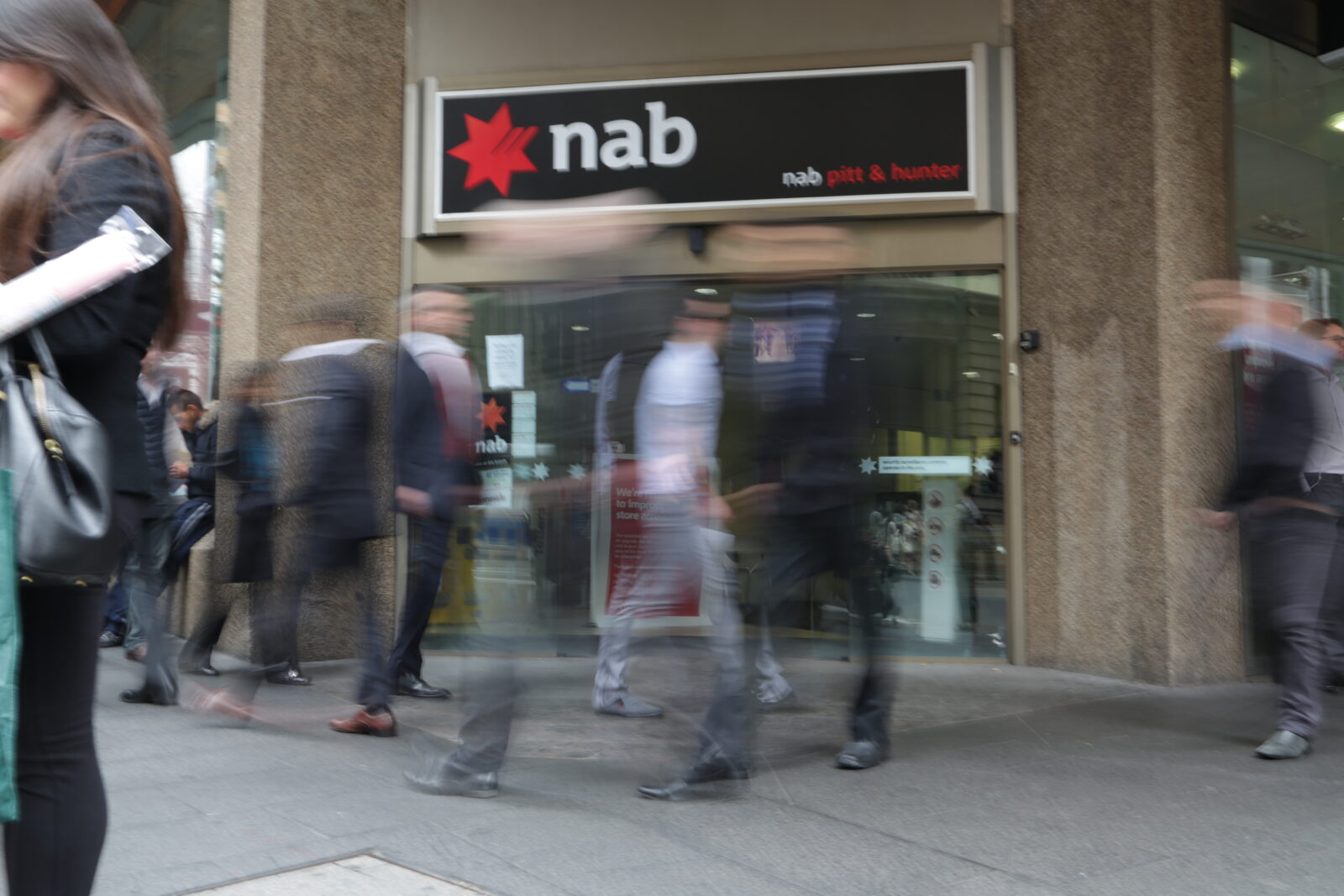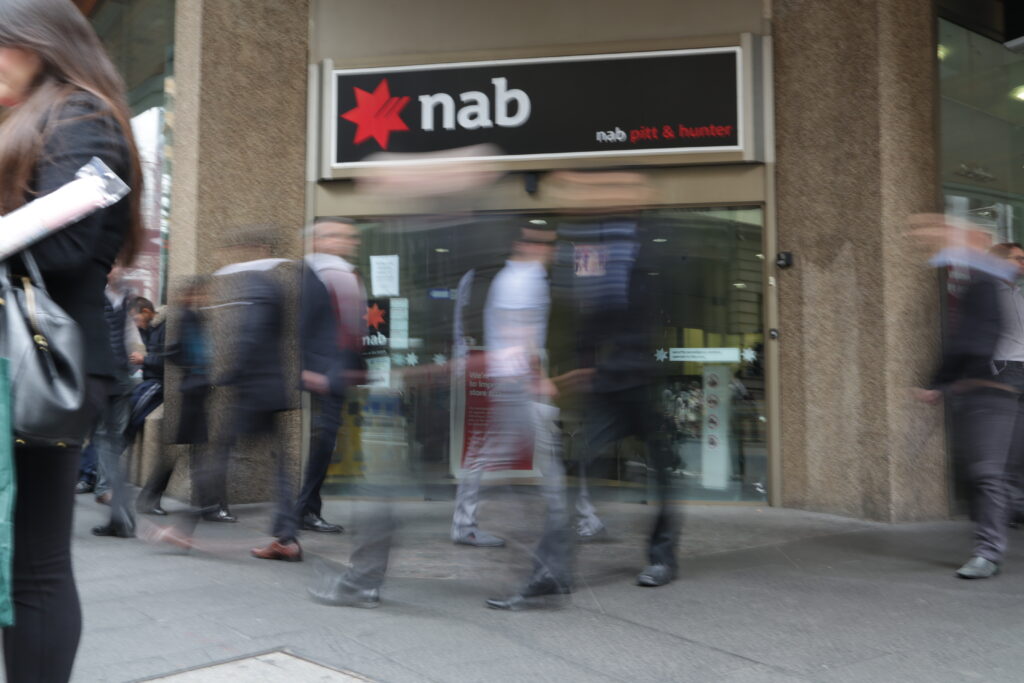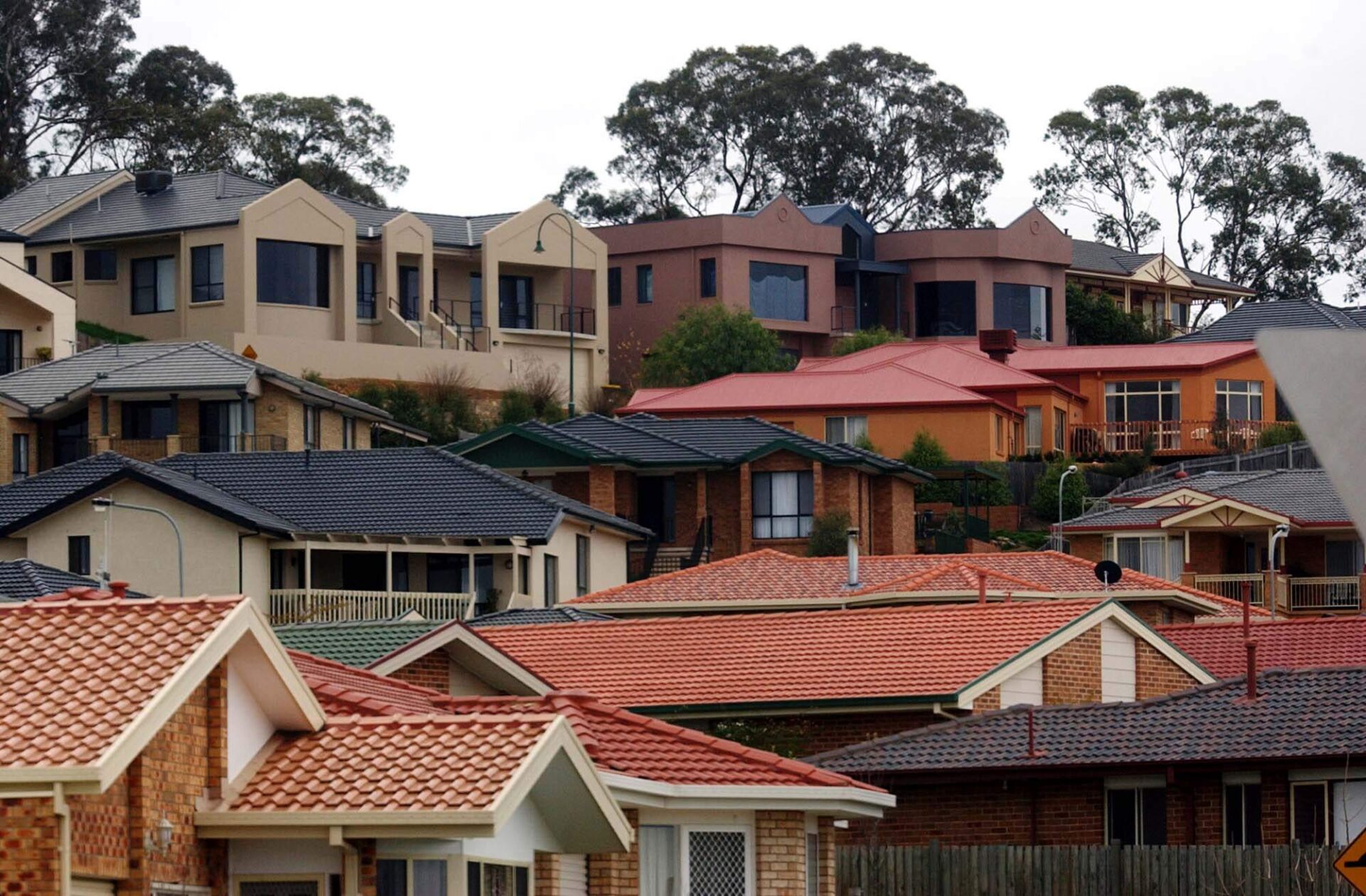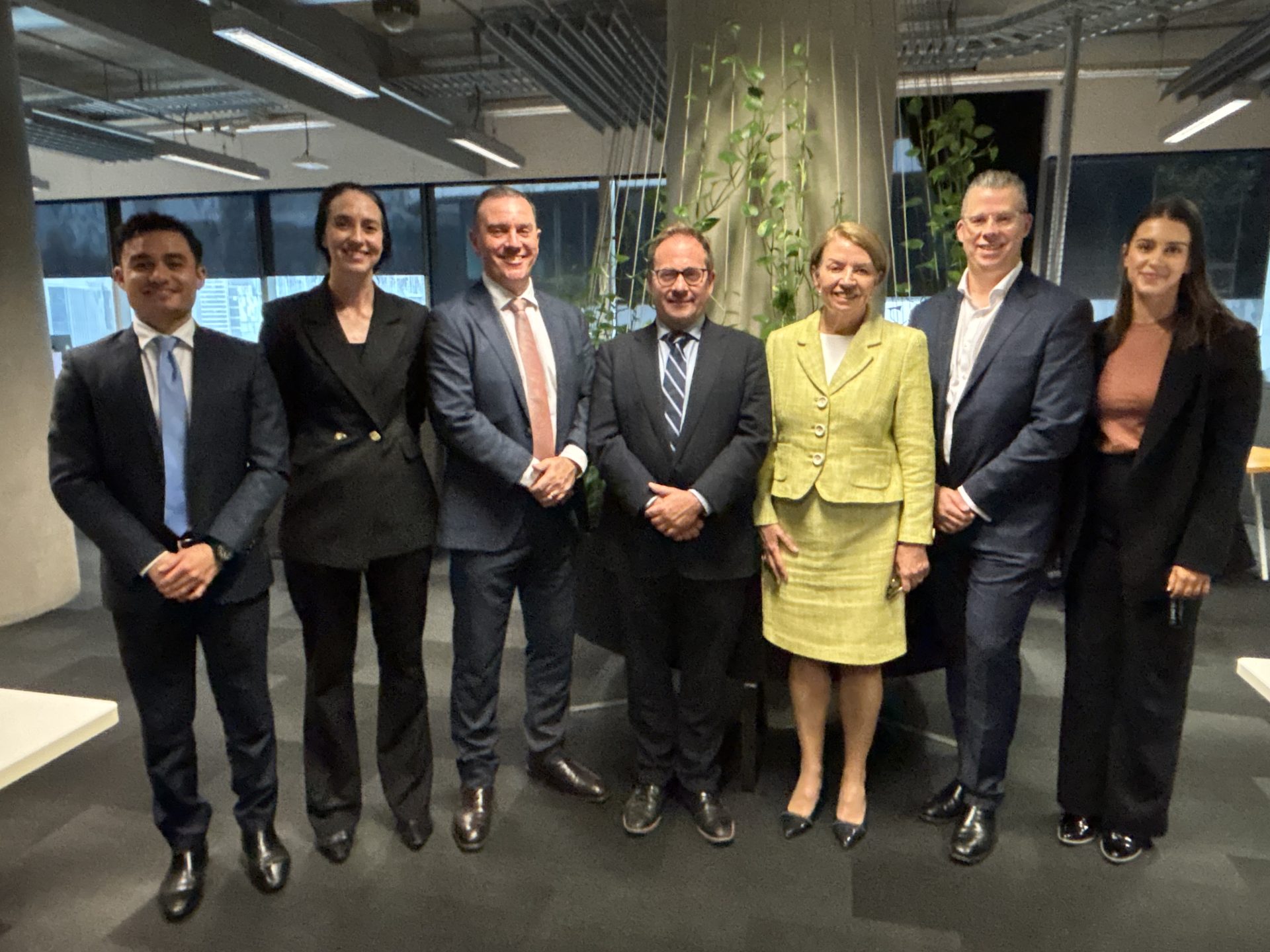NAB Executive General Manager Capital Financing, Steve Lambert, spoke today at the University of Sydney’s John Grill Centre about infrastructure and the need to better engage customers in its development.
– Check against delivery –
Supporting the Emergence of the Proactive Customer
Thank you to Garry Bowditch from the Better Infrastructure Initiative and the John Grill Centre for hosting this important dialogue.
As some of you may know, NAB is well into the first year of our four-year partnership with the John Grill Centre and the Better Infrastructure Initiative. The formal launch took place in February this year where the first paper Re-establishing Australia’s Global Infrastructure Leadership was released.
Seven months on from that launch, we are delighted to be part of the inaugural Infrastructure Dialogue and to also see the release of the second paper Shifting Australia’s Infrastructure Mindset to the Long Game.
————————-
At NAB, we know we have a bigger role to play in society.
We know, and have a responsibility to be, “More Than Money”. We now have very explicit messaging around that. We want to be as good with people as we are with money. And – we want to be as good with the whole community, as we are with money.
I am personally very happy about that.
For us, infrastructure is part of this broader “More than Money” story. And this is why we’re a member of the Better Infrastructure Initiative and why we speak out so regularly about infrastructure.
We believe we bring a unique perspective to this dialogue, because we play multiple roles beyond financing projects.
And because of this unique perspective, it is important that we share with others how we think the future should look. And how we think the problems facing the infrastructure landscape should be tackled.
We are advocates for our clients – be it the superannuation funds who invest, or the individuals who invest with superfunds.
Whether it’s the builders of our infrastructure – the contractors or the sub-contractors.
Whether it’s the service providers, the governments at all levels, or whether ultimately it is our small business and individual users of our infrastructure.
It is this perspective across all the participants that we think enables us to help the industry evolve with better outcomes.
But it’s not just perspectives that we provide.
We also make big commitments.
Our big infrastructure commitments revolve around two broad banners:
- Our commitment to assist financing of $100 billion of infrastructure over 7 years which was announced earlier this year at an Australian British Chamber of Commerce event and
- Our $18 billion clean energy commitment to 2022 made last year to help address climate change and support the transition to a low carbon economy. The $18 billion commitment specifically includes issuing and arranging green bonds and will provide an alternative source of capital for NAB’s customers to undertake climate change mitigation such as renewable energy and energy efficiency including low carbon property, low carbon transport and climate change adaptation activities.
As part of this commitment, we recently launched a world and Australian first $300 million green bond for the Treasury Corporation of Victoria. The transaction will help finance projects in Victoria such as LED traffic lights, hydroelectric power stations, low-carbon buildings at Federation Square, the Melbourne Metro Tunnel, the Mernda Rail extension and the development of a large-scale renewable energy power station.
More broadly, as a Bank, we have been focussed on our social impact – ensuring we have a holistic and sustainable approach to everything we do and our commitment to infrastructure leadership is part of that.
NAB Chairman Ken Henry will touch on this again later today in his speech, but it is worth mentioning more than once our partnership with the NSW government to provide a social impact investment which is designed to reduce re-offending and re-incarceration.
The goal is to reduce the cost to society and government by reducing the number of inmates in the prison system and ensure that parolees are given the best chance of being reintegrated into society.
This is an example of evolving solutions that deliver better societal outcomes.
This is an infrastructure story.
It’s also a holistic system story, and we must think about infrastructure as a system.
A more efficient road in Western Sydney can’t just satisfy the needs of people in Western Sydney. It needs to make the New South Wales road network more efficient, which will help the State and, ultimately, the country. No project can be viewed in isolation.
————————————–
A key evolution we are seeing is the Emergence of the Proactive Customer
Traditionally, the provision of infrastructure has fallen to a small number of broad groups to deliver:
- governments,
- those who procure the physical delivery of the infrastructure, and
- those who help finance the delivery of the infrastructure – both equity and debt – essentially the banks and the investor and capital markets.
The one group that has traditionally been less involved in the process has been the one group with arguably the most at stake – the user, the customer.
In many sectors, the customer had little say about the form of the infrastructure delivered – it was a very binary equation – the customer could choose to use the infrastructure, or not use it – which is not much choice at all.
Typically, the user had no real influence over the quality or type of service delivered, let alone the opportunity to shape how it would affect their lives.
We believe this model has been evolving for some time – for the better – with the user or customer having greater influence.
But we still have a way to go.
The Better Infrastructure Initiative’s first paper was very much about putting the customer at the centre of infrastructure service provision.
More broadly, it is not just the customer playing a greater role.
We are now at a point where we are starting to see a blurring of the boundaries – where different parties play different roles and are more active in shaping the outcome.
Where ecosystems of partners are working together toward a common goal.
Where we are not relying on and waiting for the old traditional parties to deliver.
We’re engaging with the customer – in all their forms – and empowering them to help shape the decisions that will affect them most.
What can this look like?
One example is the Victorian consortium who recently got together to create their own Power Purchasing Agreement. The consortium includes City of Melbourne, Melbourne Zoo, Australia Post, RMIT, Melbourne University, NextDC and NAB. The parties got together to bring about their own change and proactively step into a new role of procuring a clean energy power purchasing agreement.
Traditionally this would have been the role of an energy retailer.
This certainly shows innovative thinking about how to procure delivery of renewable energy projects in Australia
But it also shows the power of the customer creating the outcome that it desires
The proponents have taken their own initiative.
NAB’s role in the consortium is as a procurement partner and advisor. The initiative is important to NAB. It is aligned with one of our 5 climate change commitments to procure 10% of energy from renewable sources.
This is a great example of the alignment between organisations with common objectives – customers themselves – who banded together to drive an outcome which, in the past, they may not have been able to make happen.
Why is this happening? Why are we seeing the emergence of the pro-active customer?
We believe that the confluence of many trends is driving us toward this evolution – perhaps borne out of the old adage “necessity is the mother of all invention.”
These trends include:
- Budget constrained governments. There simply isn’t an endless pot of money to spend. Governments won’t and can’t provide what all customers want;
- Our growing population, still highly urbanised but with significant growth and investment in our regional areas. With this growth comes the opportunity and necessity to think differently about the role the customer plays and indeed who the customer is. We are starting to see this play out in places like Western Sydney where the population is expected to rise to 6 million people by 2038 and circa $8 billion being invested in building a world class city – positioning Sydney to be a dual CBD city;
- As a society, we have higher expectations of quality. We will make noise when we aren’t happy;
- We also have growing global pools of private funding looking for new places to invest – exacerbated by the long term outlook of a low rate and low growth world. This pool can and should be a great enabler for the customer;
- Lastly, and arguably the most unpredictable, the impact of fast changing and adaptive technologies which affect the way infrastructure can be delivered and used. We are becoming more digital and with that more service oriented, more connected and more agile.
All of these trends point to a necessity to change and adapt.
They speak to the power of innovation that we see through an interplay of individuals, communities and corporates who are driven by progress and change.
They all speak to the emergence of the proactive customer.
As an infrastructure industry, we need to ask more questions to support this:
- What do our customers want?
- What role do we play as a customer ourselves?
- What is important?
- How can we create the solution?
- How do we think differently in supporting the proactive customer?
————————————–
We all know that Australian superannuation funds are looking to secure long term, stable, inflation-linked cashflows as their members transition to retirement.
And we all know the magnitude of the pool. It is projected that the pool could grow to an estimated $9 trillion by 2035.
And beyond the Australian fund pool, there is also significant global interest in Australian infrastructure from offshore funds.
But it’s no longer sensible to just think that a massive pool of funds plus an appetite for infrastructure equals positive outcomes. We can’t assume that this leads to customer led infrastructure.
We have all the ingredients. We have an attractive market and a significant pool of money to tap but we need to take a long term view of our infrastructure potential to unlock the true value of what we have.
We believe we have a role to play in supporting our infrastructure investors so that they can best position themselves for long and active stewardship of our infrastructure landscape.
We know they are leading the way in the role they play to ensure our infrastructure happens but also so that it is done better.
We are calling for investors to be active in bringing about change – to create long term value and to sponsor innovation.
QIC is just one notable example. Not just through the obvious role they play in procuring funds, but also in the role they play in investing in thought leadership in the industry including as a research associate in this partnership with the Better Infrastructure Initiative.
So what at NAB are we committed to?
We will continue to support our $100bn infrastructure finance commitment and we will continue to support our $18 billion clean energy commitment.
And we will also continue to work with our governments, sponsors and customers, in all forms, as we adapt to our changing environments.
We also look forward to working with Garry and the team with this partnership to keep the important conversations alive.
Australia continues to be an attractive long term market, offering a favourable combination of growth potential and a low risk operating environment.
Let’s do all we can to ensure it only improves from here
Thank you.




